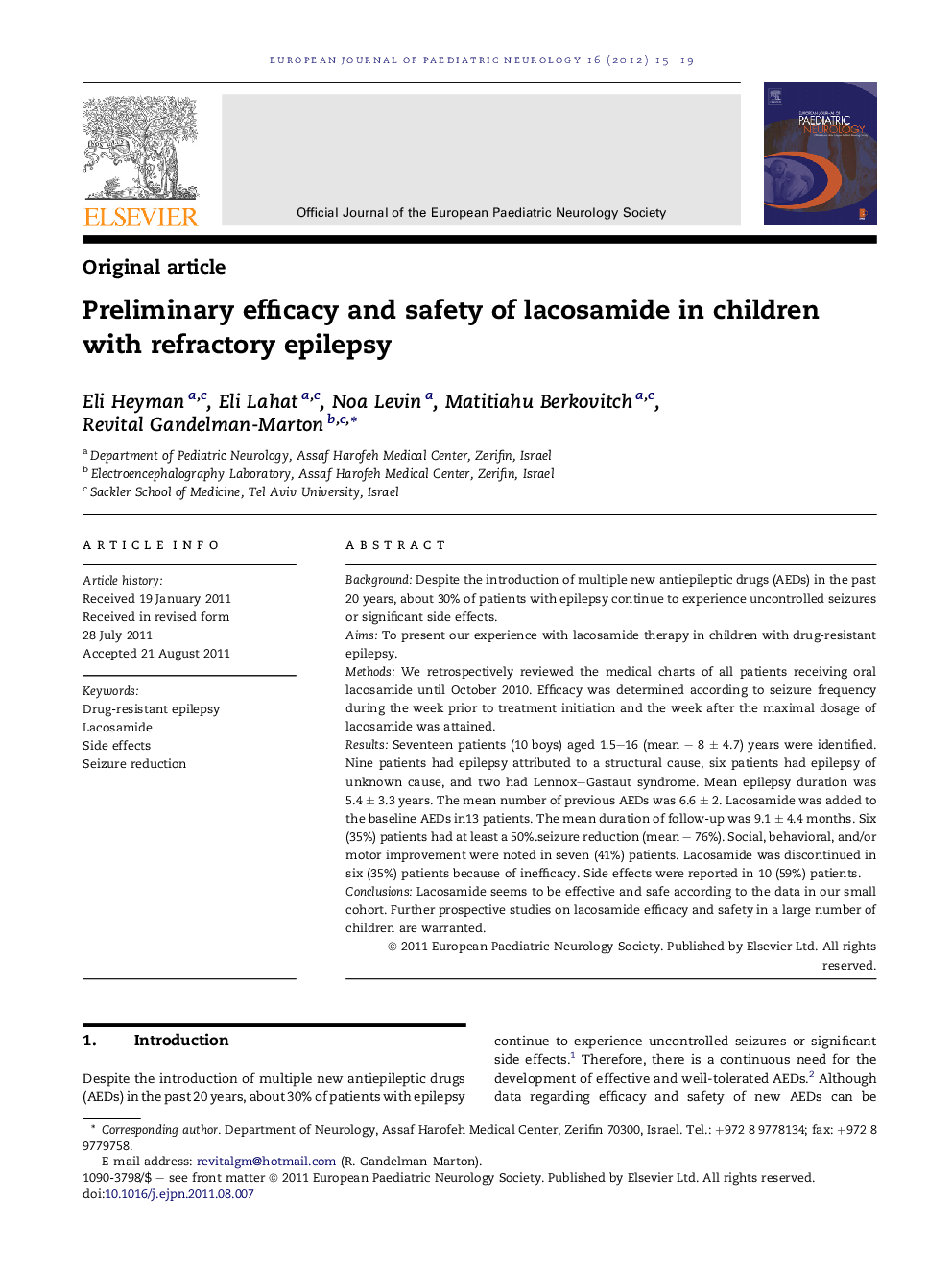| Article ID | Journal | Published Year | Pages | File Type |
|---|---|---|---|---|
| 3054335 | European Journal of Paediatric Neurology | 2012 | 5 Pages |
BackgroundDespite the introduction of multiple new antiepileptic drugs (AEDs) in the past 20 years, about 30% of patients with epilepsy continue to experience uncontrolled seizures or significant side effects.AimsTo present our experience with lacosamide therapy in children with drug-resistant epilepsy.MethodsWe retrospectively reviewed the medical charts of all patients receiving oral lacosamide until October 2010. Efficacy was determined according to seizure frequency during the week prior to treatment initiation and the week after the maximal dosage of lacosamide was attained.ResultsSeventeen patients (10 boys) aged 1.5–16 (mean – 8 ± 4.7) years were identified. Nine patients had epilepsy attributed to a structural cause, six patients had epilepsy of unknown cause, and two had Lennox–Gastaut syndrome. Mean epilepsy duration was 5.4 ± 3.3 years. The mean number of previous AEDs was 6.6 ± 2. Lacosamide was added to the baseline AEDs in13 patients. The mean duration of follow-up was 9.1 ± 4.4 months. Six (35%) patients had at least a 50%.seizure reduction (mean – 76%). Social, behavioral, and/or motor improvement were noted in seven (41%) patients. Lacosamide was discontinued in six (35%) patients because of inefficacy. Side effects were reported in 10 (59%) patients.ConclusionsLacosamide seems to be effective and safe according to the data in our small cohort. Further prospective studies on lacosamide efficacy and safety in a large number of children are warranted.
